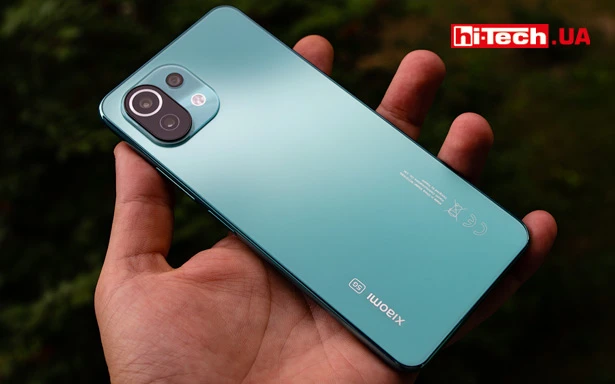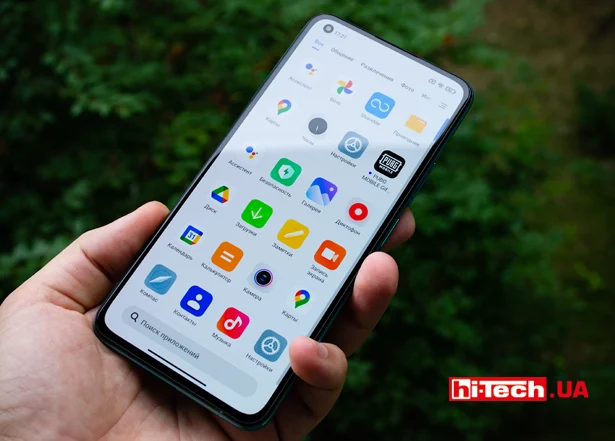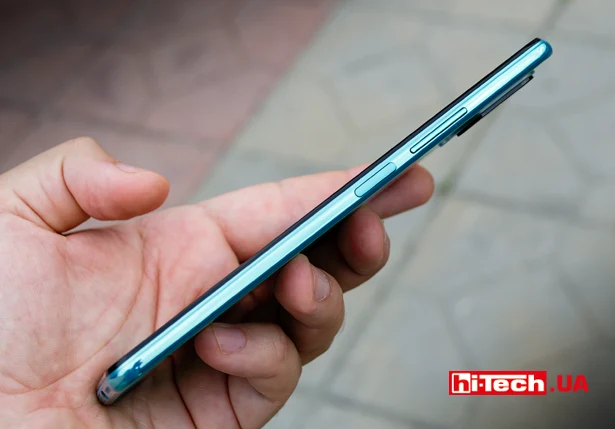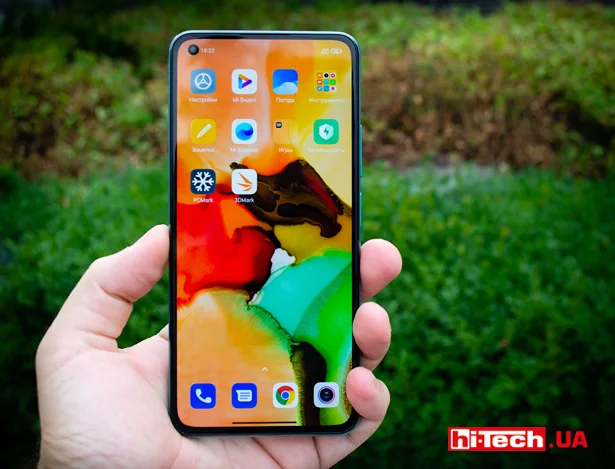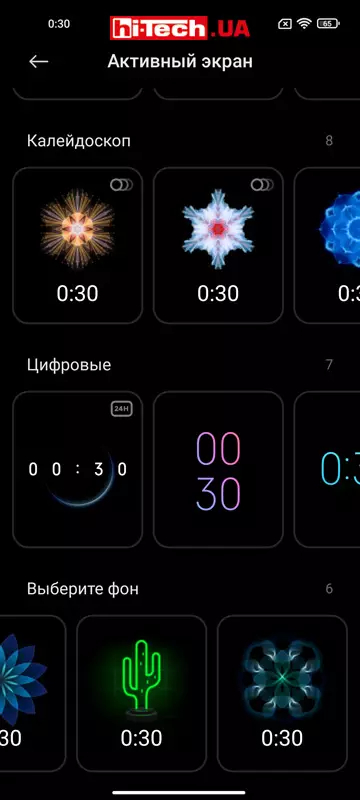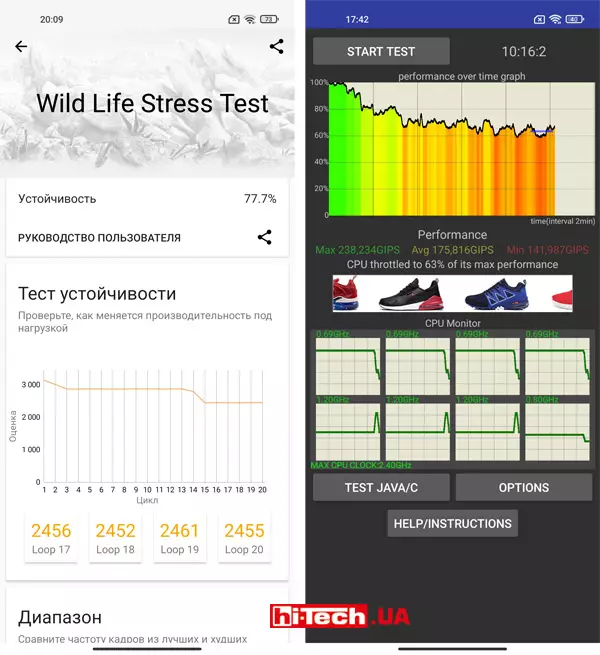Xiaomi Mi 11 Lite 5G smartphone review. Not boring
30.07.21
The Xiaomi Mi 11 Lite 5G smartphone with a 5G prefix, which came to us for testing, differs from its brother Mi 11 Lite in the use of a completely different processor. The latest Qualcomm Snapdragon 780G, produced using a 5-nanometer process technology, is installed here, while the “regular” Mi 11 Lite is content with the simpler Snapdragon 732G.
The differences are not only in support for the new generation 5G networks, but also in performance. Looking ahead a little, I note that the difference is big.
Xiaomi Mi 11 Lite 5G belongs to the popular category of smartphones priced at $300–400.
This is the beginning of the middle class, by modern standards.
Xiaomi Mi 11 Lite 5G announced at the end of March 2021. Compared to other models of the new Xiaomi Mi 11 line (Mi 11, Mi 11 Pro, Mi 11 Ultra), the Lite versions are simplified in various respects, but are much more affordable.
Among the key features that we will examine in more detail below, we note an AMOLED screen with a frequency of 90 Hz, a 64-megapixel main camera, stereo speakers and a Snapdragon 780G processor.
External inspection and equipment
The Xiaomi Mi 11 Lite 5G smartphone places a lot of emphasis, among other things, on its appearance.
The manufacturer tried to make it elegant and light. The case is only 6.8mm thick and weighs 159g.
We received a version in a “smart” light green color. There are also black and yellow versions of the Xiaomi Mi 11 Lite 5G. It is curious that the colors of the Mi 11 Lite (not 5G) are different.
The front panel is flat, which is convenient. The selfie camera is not in the center, but shifted to the side. They made a cutout for her.
The frame of the device is made of plastic. In this category of smartphones, it’s hard to expect a metal frame.
But the back panel is glass with a matte finish. The texture under the glass is made in such a way that the smartphone “plays” with a pearlescent shimmer when hit by light.
The combination of a matte finish and light color made the surface quite practical. Fingerprints are not so noticeable here.
IP53 dust and splash protection is declared (this is simpler protection compared to IP67, IP68).
Xiaomi Mi 11 Lite 5G does not support wireless charging.

On the bottom there is a USB-C connector, a SIM card slot, a microphone and a series of speaker holes
On its website, the manufacturer separately emphasizes that the module with rear cameras protrudes beyond the body very slightly. If we compare, for example, with the protrusion on the Xiaomi Redmi Note 10 Pro, we can definitely agree with this.

I had the opportunity to compare Xiaomi Mi 11 Lite 5G with Redmi Note 10 Pro.
Oddly enough, the thinner body, reduced weight and smaller size really made a difference in comfort. The Mi 11 Lite 5G fits much more comfortably in your hand and pocket. I didn’t expect such a noticeable effect.
The fingerprint sensor is built into the power button. It works very quickly and reliably. Personally, I prefer this implementation compared to sensors built under the screen.
The Xiaomi Mi 11 Lite 5G does not have a separate information LED indicating received notifications, charging status, etc.
It’s not easy to guess from an external inspection, but there are stereo speakers installed here. One is located on the bottom edge, it is easy to recognize, and the second is combined with the earpiece above the screen.
The slot is hybrid. You can install either two SIM cards, or one SIM card and a microSD memory card.
The model does not have a 3.5 mm headphone/headphone output. This is partially offset by the USB-C headphone adapter that comes in the box.
You can also find a bumper case in the set. With it, the power button is recessed and its location is easier to find by touch.
Screen
The Xiaomi Mi 11 Lite 5G has an AMOLED screen with a diagonal of 6.55” and a resolution of 2400×1080 pixels. (ratio 20:9).
The maximum declared brightness is 500 nits (800 nits peak). Supports DCI-P3 wide color gamut, HDR 10+ technology and a maximum refresh rate of 90 Hz.
The screen is very bright, with excellent contrast (thanks to AMOLED technology) and wide viewing angles.
You can set the mode with a refresh rate of 60 or 90 Hz. In the first case, theoretically, the device will work a little longer without recharging. There is no automatic frequency control mode.
How important is the presence of a higher frequency, in this case up to 90 Hz?
Scrolling in the menu, browser, swiping between windows, etc. is really smoother. The difference compared to 60 Hz is noticeable, so 90 Hz support is a very nice feature. Personally, I really appreciate it.
How does a 90Hz screen compare to 120Hz screens?
When comparing Xiaomi Mi 11 Lite 5G (90 Hz) with Redmi Note 10 Pro (120 Hz), the differences can only be noticed when the devices are side by side. There is no significant difference.
By the way, between these models, it was very difficult to determine the winner by eye based on maximum brightness. They showed approximately the same results both during normal work and when watching special HDR-compatible videos on YouTube.
Among a fairly standard set of different image modes, a setting unexpectedly appeared related to the choice of color gamut width (color space).

This is just a gift for those users who understand in which cases an extended color gamut (wider than 100% sRGB) is not always good and for which sometimes it can be useful to set the non-expanded gamut to 100% sRGB.
There is no separate item for enabling DC Dimming (flicker-free backlight without PWM modulation).
There was no way to check PWM flicker with any special equipment, and I didn’t notice any flicker by eye even at low brightness values and different screen refresh rates.
The Mi 11 Lite 5G smartphone does not support the full Always On Display function.
Instead, there is a so-called “active screen”. After touching the screen, an element with a clock and information about received notifications smoothly appears. The problem is that after 10 seconds this element goes out.
MIUI 12.5 proprietary shell
Relatively recently, Xiaomi Mi 11 Lite 5G received firmware updating the proprietary interface to MIUI 12.5 (based on Android 11).
This is a very nice shell without any obvious flaws, in my opinion.
The smartphone works very quickly and responsively with it.
I partially touched on the features of MIUI 12.5 in the Redmi Note 10 Pro test.
Application shortcuts can be placed on desktops or called up from a separate menu.
Available as a traditional drop-down curtain design with buttons at the top and notifications at the bottom, or a new option where buttons and notifications are separated into separate curtains.
Control options include an option with separate buttons at the bottom or a method with gesture control (like in the iPhone).
The selfie camera can be hidden behind a horizontal black stripe if you don’t like to see a separate cutout.
The call recording function is not available on our Xiaomi Mi 11 Lite 5G. This may be due to regional characteristics. We tested a version of the device for European countries.
It’s quite interesting that in the case of the Xiaomi Mi 11 Lite 5G, I didn’t see any advertising in the MIUI 12.5 shell. Despite the fact that it was present in the previously tested Redmi Note 10 Pro.
Cameras and filming
In the camera block on the rear panel you can see three lens eyes and a flash.
The camera modules have the following configuration.
- Main 64-megapixel camera with wide viewing angle. Highlighted with a silver ring. A large (this is good) sensor of size 1/1.97” is installed.
Lens with aperture F: 1.8. There is no optical stabilization.
- Additional 8-megapixel ultra-wide-angle camera (probably Sony IMX355 sensor). Lens with aperture F: 2.2.
- Separate 5-megapixel macro camera
When shooting with the main 64-megapixel camera, pixels are combined into groups of 6 and the output is a 12-megapixel frame. This is standard practice for modern smartphone sensors with high resolution. In 48-megapixel sensors, pixels are combined in groups of 4, and in 108-megapixel sensors – in groups of 9.
By turning on a separate mode, you can get a picture with a full resolution of 64 megapixels. Just don’t expect that the detail will increase greatly.
There is no optical stabilization. And the electronic one is also available for 4K video shooting. For comparison, Redmi Note 10 Pro does not support electronic stabilization for 4K recording.
The maximum frame rate for 4K video is 30 fps. At Full HD – 60 fps.
There is a separate slow motion mode where the frequency can be higher.
The additional 8-megapixel ultra-wide-angle shoots noticeably “wider” compared to the main one. This is good.
But in terms of characteristics it is much “weaker”. Accordingly, if there is insufficient lighting, the quality of pictures and videos will be much worse compared to the main 64-megapixel camera. Keep this in mind when shooting.
Comparison of the main camera and ultra-wide-angle
For enthusiasts, there is a “pro” mode with manual settings. You can manually adjust the focus, set the shutter speed, set the ISO sensitivity, select the exposure metering method, etc. And here there is an option to enable the output of frames in RAW format.

The smartphone does not have a separate telephoto camera. It turns out that when you increase the zoom, the zoom is digital with a corresponding drop in quality.
Examples of shooting with zoom 0.6x (ultra-wide-angle camera), 1x (main camera) and digital zoom 2x, 5x, 10x
Many modern Xiaomi smartphones are distinguished by their simply gorgeous macro photography mode. And Xiaomi Mi 11 Lite 5G was no exception.
The focusing system of a separate 5-megapixel module can focus at very close distances.
The result is impressive.
- “Twelve o’clock” on the dial of a wristwatch
- Image of zeros on a 200-hryvnia banknote
Judging by the recordings and pictures received, for its class, the Xiaomi Mi 11 Lite 5G provides very good shooting quality overall.
The range of different shooting settings and modes is very extensive, there is a good field for experimentation.
Some additional sample shots
Performance, heating
With its modern Qualcomm Snapdragon 780G chipset, the Xiaomi Mi 11 Lite 5G smartphone stands out from many of its classmates. Usually, competitors have weaker options like the Snapdragon 732G or other chipsets of previous generations.
One of the features of the Snapdragon 780G is support for 5G networks, but we have not yet deployed such networks. Perhaps this is a good foundation for the future, but at the moment it is difficult to regard the presence of a 5G modem as an advantage.
Another thing is that the Snapdragon 780G turned out to be very good in terms of performance.
In the AnTutu Benchmark test it received a score of 526,880 points. In comparison, the Redmi Note 10 Pro with the Snapdragon 732G chipset scored 348,125.
And in the 3DMark Wild Life 3D test, which places more emphasis on graphics, the Mi 11 Lite 5G scored 3151 points, which is almost three times higher than the Redmi Note 10 Pro.
The results shown are very high performance for the price category in which the Xiaomi Mi 11 Lite 5G is located.
There shouldn’t be any problems even with demanding games.

But as for the stability of the results under prolonged high load, not everything is perfect with the Mi 11 Lite 5G.
Apparently, it was not so easy to fully cool the powerful Snapdragon 780G in such a thin case.
In the 3DMark Wild Life stress test, performance dropped from an initial score of 3100 to 2450 in 20 cycles.
The special CPU Throttling Test application showed a decrease in results of up to 63% (if we take the initial value as 100%) in a 10-minute test.
Hereyou need to understand that, despite the decrease in speed under load, the Mi 11 Lite 5G does not start to slow down, overheat, etc. It still works very quickly, it’s just that the performance is not maximum, as in the beginning.
The case heats up under prolonged load, but becomes hot.
Battery, battery life and charging
The elegant thin body of the Xiaomi Mi 11 Lite 5G did not allow the installation of a high-capacity battery. If many POCO and Xiaomi Redmi smartphones in this price category have a battery of about 5000 mAh, then in this case the value is more modest – 4250 mAh.
In the PCMark Work 3.0 test, which simulates a certain (non-maximum) load with the screen always on, the smartphone showed a result of 12 hours and 47 minutes of battery life. This time is with the brightness set to approximately 35%.
With continuous playback of YouTube videos, the smartphone will last several hours longer.
A decent result considering the battery capacity, but the battery capacity of many other smartphones may be higher. For example, in a similar test (PCMark Work 3.0) Redmi Note 10 Pro lasted more than 16 hours.
The actual operating time without recharging greatly depends on what applications are running, how often the screen is used, etc. For some, it will last only a day, while for others the charge will last for several days.
The kit comes with a charger with a power of up to 33 W. It provides a good balance of charging speed and does not “load” the battery with excessively high currents, which could potentially negatively affect the battery life.
Sound
Xiaomi quite often boasts stereo speakers in its smartphones, even in relatively affordable categories.
But previously this was a feature of only top models.
The bottom speaker is quite easy to detect, but the top one, as it turns out, is combined with the earpiece.
The playback volume is high. Xiaomi Mi 11 Lite 5G plays even louder than Redmi Note 10 Pro, but the bass level is lower.
It’s easy to find fault with the sound, but overall the performance of the built-in speakers turned out to be good. I must admit, I expected the worst given the thickness of the case.
The lack of an output for wired headphones/headsets is partially compensated for by the USB-C to mini-jack 3.5 mm adapter that comes in the kit.
Strange nuances of Xiaomi
In the previous Xiaomi Redmi Note 10 Pro test, we mentioned that the smartphone has some strange nuances. It turned out that the Xiaomi Mi 11 Lite 5G is not without them.
The usual proximity sensor for turning off the screen during phone calls has been replaced with a solution using an accelerometer/gyroscope and some other sensors.
In practice, it happens that such a system is not implemented ideally. Although I noticed that in the latest firmware versions this “virtual” proximity sensor seems to work better.
I’ll also note that the Xiaomi Mi 11 Lite 5G, similar to the Xiaomi Redmi Note 10 Pro, rattles a little in the camera area if you tap the top of the case with your fingers.
This doesn’t affect anything, but it’s an interesting point.
Conclusions
Over the past year, Xiaomi has released many different smartphones in the entry-mid category under different brands and sub-brands (Xiaomi, Redmi, Poco). But there are still solutions from competitors…
Is Xiaomi Mi 11 Lite 5G lost in all this diversity?
In this case, the manufacturer decided to step aside a little from utilitarianism and tried to make the model more attractive in appearance.
There is a thin body and options with bright panel colors. The appearance is really not boring. The implication is that this will attract additional attention from younger users.
Due to its elegance, the Mi 11 Lite 5G turned out to be noticeably more comfortable in the hand compared to the Redmi Note 10 Pro. But this is a personal subjective impression.
I must say that the characteristics of the Mi 11 Lite 5G are at a good level.
Xiaomi Mi 11 Lite 5G has an excellent screen and takes very good pictures.
The advantage of the 5G modification is also the interesting Snapdragon 780G chipset. And the point here is not in 5G support (5G is not yet available in Ukraine), but in the level of performance.
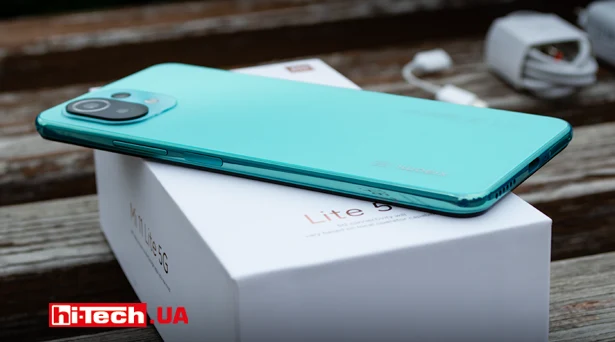
Overall, the Xiaomi Mi 11 Lite 5G is another strong player in the sub-$400 price category.
Xiaomi Mi 11 Lite 5G will easily compete with models such as Poco F3, Xiaomi Redmi Note 10 Pro.
If we talk about competitors’ devices, the Samsung Galaxy A52 immediately comes to mind. Among its advantages are the presence of optical camera stabilization and IP67 protection. But the A52 does not have a glass back panel, it is much inferior in terms of chipset.
As for prices, the Xiaomi Mi 11 Lite 5G in the version with 8+128 GB memory, as in our test, costs 11,000 UAH ($405). With memory 6+128 GB – 10,000 UAH ($370).
If you are not going to often run some very demanding applications, for example, for video editing, and are not a hardcore gamer, then you can pay attention to the “regular” version of Xiaomi Mi 11 Lite with a Snapdragon 732G processor.
In everyday tasks there should be no difference in smooth operation and responsiveness between them, but Xiaomi Mi 11 Lite without 5G is cheaper – 9000 UAH for the 6+128 GB version and 8300 for the model with 6+64 GB memory.

| Main characteristics of Xiaomi Mi 11 Lite 5G (M2101K9G) | |
| Screen: | 6.55″, 20:9, AMOLED |
| Screen resolution: | 2400×1080 pixels |
| Maximum screen frequency: | 90 Hz |
| Operating system: | Android 11 + MIUI 12.5 |
| Rear cameras: | 64 megapixels. (main), 8 megapixels. (ultra-wide-angle), 5 MP (macro) |
| Selfie camera: | 20 megapixels. |
| Processor: | Qualcomm Snapdragon 780G |
| RAM capacity: | 8 GB (LPDDR4X) |
| Built-in memory: | 128 GB UFS 2.2 |
| Fingerprint sensor location: | built into the power button |
| Card reader: | microSD |
| Dual SIM support: | yes |
| Wireless interfaces: | Bluetooth 5.2, Wi-Fi 6 |
| NFC support: | yes |
| GPS receiver/gyrosensor/light sensor: | yes/yes/yes |
| FM radio/IR transmitter: | no/yes |
| Headphone/headset jack: | no |
| Wireless charging: | no |
| Battery capacity: | 4250 mAh |
| Case materials: | plastic + glass back panel |
| Dimensions: | 160×76×6.8 mm |
| Weight: | 159 g |
| Additional features: | IP53 protection, bumper case and USB-C to mini-jack 3.5 mm adapter included |
| Supplier: | Xiaomi representation |
| Price of the version with 8+128 GB memory: | 11 000UAH ($405) |
Rating:
+ good screen with support for 90 Hz frequency
+ high performance
+ relatively thin and light
+ glass back panel
+ camera capabilities in general, including impressive macro photography
+ bumper case included
+ stereo speakers
+ power supply with support for high-speed charging included
+ declared protection against splashes and dust IP53
- decrease in performance under prolonged high load
- no full Always On function
- something rattles in the upper part of the case (almost imperceptibly)
- no 3.5mm headphone/headphone output
See also:
Review of the Xiaomi Redmi Note 10 Pro smartphone . People’s choice in the middle class?
Engineer of the Test Laboratory
Don't miss interesting news
Subscribe to our channels and read announcements of high-tech news, tes
Oppo A6 Pro smartphone review: ambitious

Creating new mid-range smartphones is no easy task. Manufacturers have to balance performance, camera capabilities, displays, and the overall cost impact of each component. How the new Oppo A6 Pro balances these factors is discussed in our review.
Top news of 2025 on hi-tech.ua

Our editorial team traditionally sums up the results every year. We recently showcased the editors’ top devices. Now it’s time to share the top news stories from hi-tech.ua in 2025.
Asus ROG XREAL R1 AR – gaming glasses that generate 171” diagonal image Asus augmented reality CES
ROG XREAL R1 AR – augmented reality gaming glasses equipped with micro-OLED panels with Full HD resolution and a refresh rate of 240 Hz
Intel Core Ultra 300 – new processors have up to 77% gaming performance boost CES Intel processor world events
At CES 2026, Intel officially introduced the Core Ultra Series 3 processors, also known by the code name Panther Lake.

